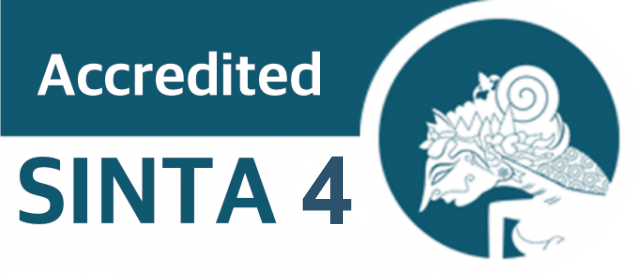Life-Long Learning Profile of Junior High School Students in Science Learning
DOI:
10.29303/jpm.v20i2.8523Published:
2025-03-14Issue:
Vol. 20 No. 2 (2025)Keywords:
Life-long Learning; Profile; Science LearningArticles
Downloads
How to Cite
Downloads
Metrics
Abstract
Implementing life-long learning is vital to help students face rapid global development. Life-long learning is a principle in organizing education and a primary need for everyone to adapt to changing times. This study aims to analyze the application level of lifelong learning among SMP Negeri 1 Pucakwangi students, especially class VII students. This study used a descriptive qualitative approach with a sample of 28 students. Data were collected through a questionnaire containing five life-long learning indicators: complex thinking, information processing, effective communication, collaboration/cooperation, and habits of mind. The results showed that overall, the level of life-long learning application of students at SMP Negeri 1 Pucakwangi was still in the poor category, with an average score of 2.8 out of a 4.0 scale. Students obtained a high score (3.0) in the complex thinking indicator. In contrast, in other indicators, such as information processing (2.7), effective communication (2.6), collaboration/cooperation (2.8), and habits of mind (3.1), the scores obtained were still relatively low. The three indicators that obtained low scores, namely information processing, effective communication, and collaboration/cooperation, indicate that students still need further development in these skills. Based on the study results, it can be concluded that although some indicators show good results, there are also indicators that need to be improved to optimize the implementation of lifelong learning. Therefore, there is a need for further efforts in improving students' skills, especially in terms of information processing, effective communication, and collaboration, so that they can be better prepared to face the growing global challenges.
References
B. A. Sumantri, “Pengembangan Kurikulum di Indonesia Menghadapi Tuntutan Kompetensi Abad 21,” eL-HIKMAH J. Kaji. dan Penelit. Pendidik. Islam, vol. 13, no. 2, pp. 146–167, 2019, doi: 10.20414/elhikmah.v13i2.661.
I. Azzahro Aulia, A. Ilhami, N. Dian Permana Putra, and M. Ilham Syarif, “Analysis of Malay ethnoscience-based module development in integrated science learning: systematic literature review,” J. Pendidik. Ipa Veteran, vol. 7, no. 1, p. 2023, 2023, [Online]. Available: http://e-journal.ivet.ac.id/index.php/jipva
D. R. P. Andriani and A. S. Nugroho, “Webinar Biofair Pendidikan Biologi Universitas Pgri Semarang Prosiding Webinar Biofair 2023,” Peran. SEMUT RANGRANG (Oecophylla smaragdina) PADA Perkeb. Pohon NANGKA DI DESA KEDUMULYO, KABUPATEN PATI JAWA Teng., pp. 252–266, 2023.
M. S. Ummah, “Mengartikulasikan Perencanaan Pendidikan di Era Digital,” Sustain., vol. 11, no. 1, pp. 1–14, 2019, [Online]. Available: http://scioteca.caf.com/bitstream/handle/123456789/1091/RED2017-Eng-8ene.pdf?sequence=12&isAllowed=y%0Ahttp://dx.doi.org/10.1016/j.regsciurbeco.2008.06.005%0Ahttps://www.researchgate.net/publication/305320484_SISTEM_PEMBETUNGAN_TERPUSAT_STRATEGI_MELESTARI
Y. Nurdiana and U. Darwis, “Pengaruh Model Pembelajaran Mind Mapping Terhadap Hasil Belajar IPA Materi Peristiwa Alam pada Siswa Kelas V SD Negeri 104275 Lubuk Saban,” All Fields Sci. J. Liaison Acad. Sosiety, vol. 1, no. 3, pp. 133–146, 2021, doi: 10.58939/afosj-las.v1i3.101.
N. Sabani and Daliman, “Peningkatan Subjective Well-Being Melalui Penguatan Kebersyukuran Siswa Dalam Interaksi Sosial,” J. Psikol., vol. 14, no. 2, pp. 152–165, 2021, doi: 10.35760/psi.2021.v14i2.3948.
A. Soleh, E. R. S. Dewi, and M. S. Hayat, “Profil Lifelong Learning siswa Madrasah Aliyah Negeri Demak,” J. Inov. Pembelajaran di Sekol., vol. 4, no. 2, pp. 435–441, 2023, doi: 10.51874/jips.v4i2.142.
H. Syahrizal and M. S. Jailani, “Jenis-Jenis Penelitian Dalam Penelitian Kuantitatif dan Kualitatif,” J. QOSIM J. Pendidik. Sos. Hum., vol. 1, no. 1, pp. 13–23, 2023, doi: 10.61104/jq.v1i1.49.
Amanda and U. Darwis, “Analisis Faktor Penyebab Rendahnya Hasil Belajar Siswa pada Pembelajaran IPA Kelas IV SD Negeri 105358 Sekip Lubuk Pakam,” JISMA J. Ilmu Sos. Manajemen, dan Akunt., vol. 2, no. 4, pp. 1141–1148, 2023, doi: 10.59004/jisma.v2i4.453.
N. Darmayanti and N. W. Widiani, “Analisis Permasalahan Dalam Pembelajaran Ipa Di Kelas V Sdn 1 Cempaga,” Dharmas Educ. J., vol. 4, no. 2, pp. 903–909, 2023, doi: 10.56667/dejournal.v4i2.1201.
F. Meliniasari, S. Sudjarwo, and T. Jalmo, “Filsafat Aliran Progresivisme dan Perspektifnya Terhadap Pembelajaran IPA pada Kurikulum Merdeka,” J. Ilm. Profesi Pendidik., vol. 8, no. 1, pp. 204–209, 2023, doi: 10.29303/jipp.v8i1.1048.
S. Indiana and M. Pd, “Konsep Dasar Ipa Pada Siswa Kelas V Di Sdn Gugus 2 Kecamatan Cipayung Kota Depok,” vol. 11, pp. 86–104, 2024.
Z. N. Shamshinar and N. A. N. Azhan, “Faktor Motivasi Pembelajaran Sepanjang Hayat Terhadap Peningkatan Kompetensi Pengajaran Bahasa Arab Era Endemik,” J. Pengaj. Islam, vol. 15, no. 2, pp. 49–62, 2022.
I. K. Suparya, I Wayan Suastra, and I. B. Putu Arnyana, “Rendahnya Literasi Sains: Faktor Penyebab Dan Alternatif Solusinya,” J. Ilm. Pendidik. Citra Bakti, vol. 9, no. 1, pp. 153–166, 2022, doi: 10.38048/jipcb.v9i1.580.
M. Hasanah, H. Hasbiyati, and ..., “The Validity of STEM-Based Digital Comic Media on the Topic of the Structure And Function of Human Respiration,” JIPVA (Jurnal Pendidik. …, vol. 7, 2024, [Online]. Available: https://e-journal.ivet.ac.id/index.php/jipva/article/view/3010
F. Iswari, “Strategi Komunikasi Efektif Guru Dalam Pembentukan Karakter Siswa SMPN 64,” GANDIWA J. Komun., vol. 2, no. 1, pp. 12–19, 2022, doi: 10.30998/g.v2i1.1033.
F. Iswari, “Komunikasi Efektif Dalam Pembelajaran Daring Pada Masa Pandemi Covid-19,” GANDIWA J. Komun., vol. 1, no. 1, pp. 35–43, 2021, doi: 10.30998/g.v1i1.696.
Y. U. Nuzalifa, “Penerapan Model Pembelajaran Think Pair Share (Tps) Berbasis Lesson Study Sebagai Upaya Untuk Meningkatkan Keterampilan Kolaborasi Mahasiswa,” J. Pendidik. dan Pembelajaran Sains Indones., vol. 4, no. 1, pp. 48–57, 2021, doi: 10.23887/jppsi.v4i1.31774.
P. S. Tarisah and D. W. Silalahi, “Peran Guru Kristen dalam Mengembangkan Keterampilan Kolaboratif pada Pembelajaran Abad ke-21 berdasarkan Filsafat Pendidikan Kristen,” Diligentia J. Theol. Christ. Educ., vol. 6, no. 2, p. 241, 2024, doi: 10.19166/dil.v6i2.8289.
M. Yasir, A. Yuniasti, R. Wulandari, and N. I. Awaliyah, “Improving collaborative problem solving skills in 7 th grade junior high school students through science learning based on creative problem solving models,” JIPVA J. Pendidik. Ipa Veteran, vol. 7, no. 1, p. 2023, 2023, [Online]. Available: http://e-journal.ivet.ac.id/index.php/jipva
I. Fitriyah and S. Pratiwi, “Development of integrated worksheet for contextual teaching and learning to improve student science literacy on additive material,” JIPVA (Jurnal Pendidik. IPA Veteran), vol. 7, no. 1, pp. 12–31, 2023, [Online]. Available: https://www.e-journal.ivet.ac.id/index.php/jipva/article/view/2574
E. W. Prastyaningtyas and Z. Arifin, “Pentingnya Pendidikan Kewirausahaan pada Mahasiswa dengan Memanfaatkan Teknologi Digital Sebagai Upaya Menghadapi Revolusi 4.0,” Proc. ICECRS, vol. 2, no. 1, pp. 281–285, 2019, doi: 10.21070/picecrs.v2i1.2382.
B. N. Trisna, “Education 4.0 Perubahan paradigma dan penguatan kearifan lokal dalam pembelajaran matematika,” Math Didact. J. Pendidik. Mat., vol. 5, no. 1, pp. 83–92, 2019, doi: 10.33654/math.v5i1.519.
R. S. Budiarti, “Study of Creative Thinking Ability in Project Learning through Field Trip at Lake Tangkas Jambi,” J. Pendidik. Ipa Veteran, vol. 7, no. 2, p. 2023, 2023, [Online]. Available: http://e-journal.ivet.ac.id/index.php/jipva
A. W. Muhammad Yunus1, “Konsep Dan Penerapan Pendidikan Sepanjang Hayat Dalam Keluarga,” vol. 9, no. 1, pp. 44–55, 2018.
Y. W. Rini and M. I. Anshori, “The Role of Interpersonal Communication in Personal Development and Lifelong Learning for Employees,” Indones. J. Econ. Manag. Sci., vol. 1, no. 3, pp. 361–376, 2023, doi: 10.55927/ijems.v1i3.4735.
N. S. N. Mad, M. M. Yunus, and M. S. A. Azziz, “Aspek Dan Penilaian Kesejahteraan Subjektif: Kebahagiaan, Kegembiraan, Kepuasan Dan Kualiti Hidup,” J. Pengaj. Melayu, vol. 32, no. 2, pp. 94–111, 2021.
Author Biographies
Citra Khoerun Nikmah, Science Education, Postgraduate Program, PGRI University Semarang
M. Syaipul Hayat, Science Education, Postgraduate Program, PGRI University Semarang
Siti Patonah, Science Education, Postgraduate Program, PGRI University Semarang
License
Copyright (c) 2025 Citra Khoerun Nikmah, M. Syaipul Hayat, Siti Patonah

This work is licensed under a Creative Commons Attribution 4.0 International License.
The following terms apply to authors who publish in this journal:
1. Authors retain copyright and grant the journal first publication rights, with the work simultaneously licensed under a Creative Commons Attribution License 4.0 International License (CC-BY License) that allows others to share the work with an acknowledgment of the work's authorship and first publication in this journal.
2. Authors may enter into separate, additional contractual arrangements for the non-exclusive distribution of the journal's published version of the work (e.g., posting it to an institutional repository or publishing it in a book), acknowledging its initial publication in this journal.
3. Before and during the submission process, authors are permitted and encouraged to post their work online (e.g., in institutional repositories or on their website), as this can lead to productive exchanges as well as earlier and greater citation of published work (See The Effect of Open Access).











